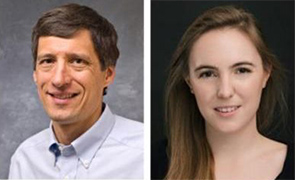Seminar
Some particle properties relevant to virus transmission and masks

Dan Murphy and Christina Williamson
NOAA CSL and CU CIRES
Wednesday, 13 May 2020
10:00 am Mountain Time
webinar only
Abstract
There are some properties of particles exhaled by humans that can help us as scientists understand the recommendations for maintaining 6 foot distance and wearing masks in public spaces during the COVID19 pandemic. We limit this discussion to the particle properties relevant to virus transmission. This is only a small part of understanding virus transmission by particles, with large contributions coming from various fields within biology and virology.
We will look at some of the literature on what size particles are produced when we breathe, speak, or cough. These particles can range from about one to hundreds of micrometers in diameter. Some relevant properties are how quickly particles settle to the ground and how far they travel into our body when we breathe. A key parameter is the "stopping distance" that describes how far a particle tends to travel in a straight line. This is very important for how particles are removed in a filter or mask. We will describe some of the basic principles of how filters work, what it means for a mask to be "N95" and present some preliminary tests we have carried out on the efficacy of different fabrics that could be used in homemade masks. Different size particles have very different transmission through filters. It is therefore very important what size particles are responsible for virus transmission.
Virus transmission, however, is about both physical and biological processes so it is important not to overstate aerosol properties as determining infection. The 6-foot rule and masks are both useful for a wide range of sizes but the reasons they are important change with the size of the particles.
Dan Murphy and Christina Williamson work in the Cloud & Aerosol Processes Group of the NOAA Chemical Sciences Laboratory.
ALL Seminar attendees agree not to cite, quote, copy, or distribute material presented without the explicit written consent of the seminar presenter. Any opinions expressed in this seminar are those of the speaker alone and do not necessarily reflect the opinions of NOAA or CSL.